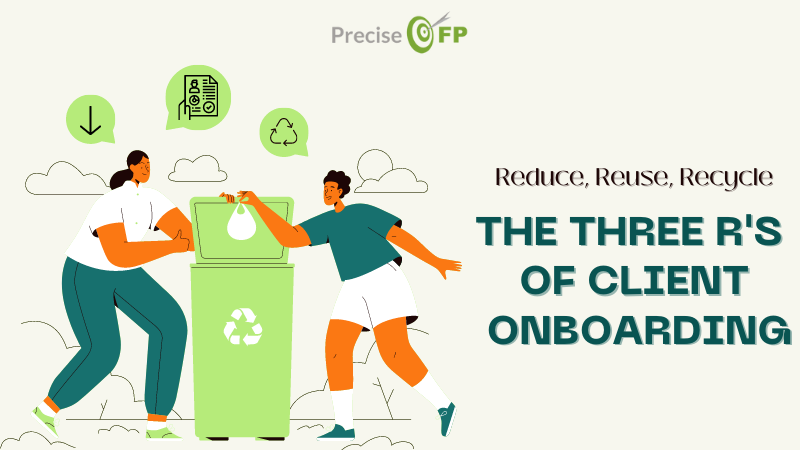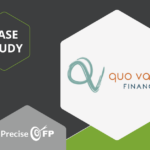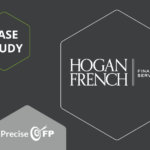Client onboarding means different things to different people. To some, it means getting agreements signed, accounts opened, and assets transferred. To others, it can mean performing a risk tolerance assessment, creating an investment policy statement (IPS), and even going so far as creating a financial plan so that assets are properly invested and earmarked for future goals. Of course, that definition can extend to mean a combination of any of the aforementioned, and beyond.
However you define onboarding, the process will involve both engagement and data gathering. As much as we’d like to remove the burden of data providing from the client, the reality is the client must be involved. Just like a doctor can’t treat a patient for hypertension without first measuring the patient’s blood pressure, the advisor cannot know what accounts to open, what assets to transfer, and how assets are to be invested, without first engaging the client and gathering the relevant information.
Client onboarding involves client participation — there is no getting around that. It’s how you engage the client and the systems and processes you use that can be the difference between easy client onboarding versus onboarding that is a pain in the keister. Let’s take a look at the Three R’s of Client Onboarding that represent my recipe for success.
Reduce… the amount of data collected in any given engagement.
- Are you asking for too much information? Consider breaking your engagement into two or more engagements. For example, have a Retirement Planning engagement one quarter, a Risk Planning engagement the following quarter, and an Estate Planning engagement the quarter after that. Fact: Financial planning can still be comprehensive when broken down into bite-sized pieces that are more easily digested.
- Do you use a one-size-fits-all fact-finder? Consider using different data gathering scopes and experiences for certain clients. Surely a retired couple has different needs than a recent college graduate. Should you be giving both the same onboarding experience?
- Finally, consider what you really need. Do you really need your new client to enter ticker symbols for all the securities in their investment account? If you want clients to remain engaged, reduce the information gathered to what is really needed for you to provide top-notch advice – nothing more, nothing less.
Reuse… the same tools for all or most of your onboarding, rather than several different tools.
- First things first, and you need to ask yourself this question: “Do I have money to burn”? I see so many advisors using (and paying for) several onboarding tools, when fewer tools can not only get the job done, but save them $$$ in the process.
- Next, consider the time saved when your staff can more easily incorporate workflows thanks to the consolidation of onboarding tools. The reality is, the more tools you use, the harder it is to establish time-saving workflows. Not only that, the more tools you have, the more time you and your staff will spend learning and maintaining those extra tools.
- Finally, repurposing the tools you use, and eliminating others, can make the process easier for clients by reducing the number of places they need to log in. It also tightens the learning curve by freeing clients from the need to figure out how to navigate through multiple interfaces.
Recycle… the client data you already have.
- I am willing to bet that you already have quite a bit of client data in your CRM and financial planning tools. You need to recycle that data when engaging clients to further lessen the data providing burden on your client. Partially fill account opening forms with the data you already have.
- If your client has already provided data at some point, you need to recycle that data as well. Nothing says “I don’t value your time” more than asking the same questions over and over again in your onboarding process (and during periodic reviews).
- Recycling goes the other way too. As part of your data gathering process, you should be sharing collected data with your CRM and other tools. In so doing, you’ll get yourself out of the data entry business while avoiding keystroke errors caused by manual data entry into multiple systems.
Client Onboarding and Data Gathering are topics that are largely overlooked by advisory firms. If the fact that the CFP Board includes data-gathering in their 6 steps to financial planning isn’t reason enough to give it more attention, the sheer cost of not doing onboarding the right way should provide ample incentive to take a closer look at how your processes can be improved upon.
Don Whalen, CFP®, President






